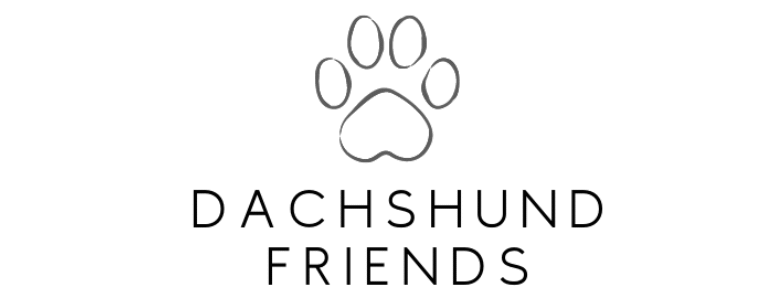Top 10 Essential Pet First Aid Tips For Dachshund Owners
When it comes to owning a dachshund – or in fact any other dog or pet – it’s really important as a responsible owner to ensure that you’re well prepared in case of an accident or something happening to your dachshund, especially if you’re not able to get to a vet straight away.

This is even more important if you are new to dog ownership, and was something that I personally had to do research into when I was looking to get a dachshund to make sure I understood what precautions to take.
Here are our top 10 pet first aid tips that every dachshund owner should know:
1. Create a Canine First Aid Kit:
When it comes to basic first aid for dachshunds, creating a comprehensive canine first aid kit is a proactive measure that every responsible dachshund owner should undertake.
The best first aid kit will a variety of essentials to address a range of potential minor injuries. In addition to sterile gauze and adhesive bandages for wound care, include antiseptic wipes to clean any wounds. Tweezers are invaluable for removing splinters or foreign objects, while a pair of blunt-nosed scissors ensures safe trimming of fur around wounds. Consider including items such as an emergency blanket, a muzzle for safety, and any specific medications your dachshund may require.
A well assembled first aid kit will equip you to promptly attend to any minor injuries ahead of being able to see a vet. Regularly review and update the contents of your first aid kit to make sure it’s well stock and has everything you need in an emergency.
2. Know Your Vet’s Contact Details:
Ensure that your vet’s contact information is easily accessible in the event of an emergency. It’s a good idea to store their number in your phone and have it noted down somewhere safely. Take it a step further by noting emergency contact details for out-of-hours situations, guaranteeing that you can reach professional medical care for your dachshund in an emergency if required.
If you’re using a day care provider or dog boarder, it’s also a good idea to make sure that they also have access to your vet’s details too.
In addition to having your vet’s information on hand, familiarise yourself with the location of your emergency veterinary clinic – often your veterinary practise will have a designated local provider that they use for out of hours care, so finding out this is important in case you need to use it. Emergencies can happen at any time, and knowing the quickest route to professional care can make a significant difference and ensure that you’re well-prepared for unforeseen situations.
Regularly update this information to stay informed about any changes in your veterinary clinic’s emergency procedures or contact details.
3. Identify Poisonous Plants and Foods:
Dachshunds are known for their curiosity, so it’s vital to be aware of common household items that can be toxic to them. Chocolate, certain houseplants, and human medications are among the key offenders, and awareness of these potential dangers is essential for responsible ownership. You should take steps to keep these items out of reach and contact your vet immediately if ingestion occurs.
To implement preventative measures, take a meticulous approach to pet-proofing your living space. Ensure that items such as chocolate and medications are securely stored in cabinets or elevated spaces beyond your dachshund’s reach. We have written a post before about specific food dangers at Christmas which includes some items that can be seen in homes regularly throughout the year, but this isn’t an exhaustive list so make sure you understand the most common toxins.
Additionally, familiarise yourself with a comprehensive list of poisonous plants, and either remove them from your home or place them in areas inaccessible to your curious pet.
In the unfortunate event of ingestion, act promptly by contacting your vet immediately. Quick intervention can make a significant difference in reducing the harmful effects of toxic substances. Have your vet’s contact information readily available and, if possible, keep a list of potential toxins for reference.
4. Recognise Signs of Heatstroke:
Dachshunds can be sensitive to temperature extremes, which can lead itself to heatstroke. Recognising indicators of heatstroke early on will allow for swift intervention if needed. Excessive panting, lethargy, and drooling are key symptoms of heatstroke that need immediate attention.
As a responsible owner, it’s crucial to make sure your dachshund stays safe during warmer weather. Provide ample shade to shield them from the sun’s intense rays and ensure a constant supply of cool, fresh water. Additionally, be mindful of outdoor activities during peak heat hours, opting for early mornings or late evenings for walks and playtime.
If you observe signs of heatstroke despite preventative measures, take prompt action. Move your dachshund to a cooler area, offer water, and use a damp cloth to cool them down gently. However, seeking professional help is vital. Contact your vet promptly to discuss the symptoms and follow their guidance for further care. Stay informed about heatstroke prevention strategies to ensure a safe and enjoyable environment for your dachshund in all weather conditions.
5. Handle Cuts and Wounds Properly:
Knowing how to properly address cuts and wounds in your dachshund is a fundamental aspect of responsible pet care. In the event that your dachshund sustains an injury, swift and appropriate action can make a significant difference in their recovery, especially if you can’t get to see a vet straight away.
Begin by gently cleaning the cut or wound with antiseptic wipes to prevent infection. This initial step can help minimise the risk of complications. After cleaning, apply a sterile dressing to protect the wound and facilitate the healing process. Regularly monitor the area for any signs of infection, such as swelling, redness, or discharge.
In cases where the wound appears severe or if you have concerns about its healing progress, it is advisable to consult your veterinarian promptly. Seeking professional advice ensures that any potential issues are addressed promptly, preventing complications and promoting optimal healing.
Regularly update your first aid knowledge to stay prepared for any unexpected injuries that may arise in the future – you may even want to consider taking a basic pet first aid course to prepare yourself for any possible issues.
6. Be Prepared for Choking:
Dachshunds, like any dogs, tend to have hearty appetites and as such there is always a potential risk of choking.
If your dog is choking, the first thing to do would be to see if you’re able to dislodge the item with a finger sweep. However in case that isn’t successful, familiarising yourself with the Heimlich manoeuvre for dogs is a proactive step in emergency preparedness. This life-saving technique can be applied if your dachshund ever experiences choking, allowing you to swiftly and effectively assist them.
You can also take preventative measures to prevent choking in the first place by creating a pet-friendly environment in the home. Keep small objects that could potentially be swallowed out of your dachshund’s reach. This includes toys, household items, and any other objects that may pose a choking hazard. Regularly inspect your living spaces to identify and eliminate potential risks, promoting a safe and secure environment for your dog.
Attend pet first aid classes or consult with your veterinarian to ensure you are well-prepared to respond effectively in case of an emergency. Regularly review and update your knowledge to stay current on best practices for preventing and addressing choking incidents.
7. CPR Basics:
Acquiring proficiency in the basics of canine CPR is a vital skill for every responsible dachshund owner. Though the hope is that you’ll never need to employ this technique, being prepared for emergencies could one day save your dog’s life. Canine CPR can prove to be a lifesaving intervention in critical situations such as cardiac arrest or respiratory distress.
To equip yourself with this essential skill, explore available classes offered by local animal organisations or through reputable online platforms. These courses typically cover the fundamentals of canine CPR, guiding you through the proper techniques and steps required to administer cardiopulmonary resuscitation to your dachshund. Regularly refreshing your knowledge through refresher courses or updates ensures that you remain confident and capable of responding effectively to any emergencies that might occur.
8. Monitor for Allergic Reactions:
Dachshunds, like any other pets, can develop allergies to specific foods or environmental factors. As a dachshund owner, it is essential to be observant and attuned to signs that may indicate an allergic reaction in your dog.
Watch for symptoms such as persistent itching, unexplained swelling, or difficulty breathing. These signs may be indicative of an allergic reaction that may require swift treatment. If you suspect that your dachshund is experiencing an allergic reaction, seek veterinary assistance promptly. Your veterinarian can conduct allergy tests, identify the specific allergen triggers, and recommend an appropriate course of action.
Regular veterinary check-ups can also aid in early detection and prevention of potential allergies, contributing to the overall health and happiness of your dachshund.
9. Addressing Insect Bites and Stings:
Being prepared to address insect bites and stings is an essential aspect of dachshund care, given the potential discomfort this can cause.
In the event of an insect bite or sting, take immediate action by using tweezers to carefully remove any embedded stinger or insect parts. Clean the affected area gently with mild soap to reduce the risk of infection. Applying a cold compress can help alleviate swelling and soothe the discomfort experienced by your dachshund. If swelling persists or if there’s any sign of an allergic reaction, consult your vet.
10. Maintain Regular Vet Check-ups:
Regular veterinary check-ups are vital for your Dachshund’s wellbeing. These appointments not only allow your vet to monitor your pup’s overall health but also ensure that vaccinations and preventive treatments are up-to-date. Consistent veterinary care plays a crucial role in preventing and detecting potential health issues early on.
Being a responsible Dachshund owner involves more than just love and attention; it requires being prepared for unforeseen circumstances. By equipping yourself with these pet first aid tips, you’re not only ensuring the wellbeing of your dog but also cultivating a strong bond built on trust and care.







